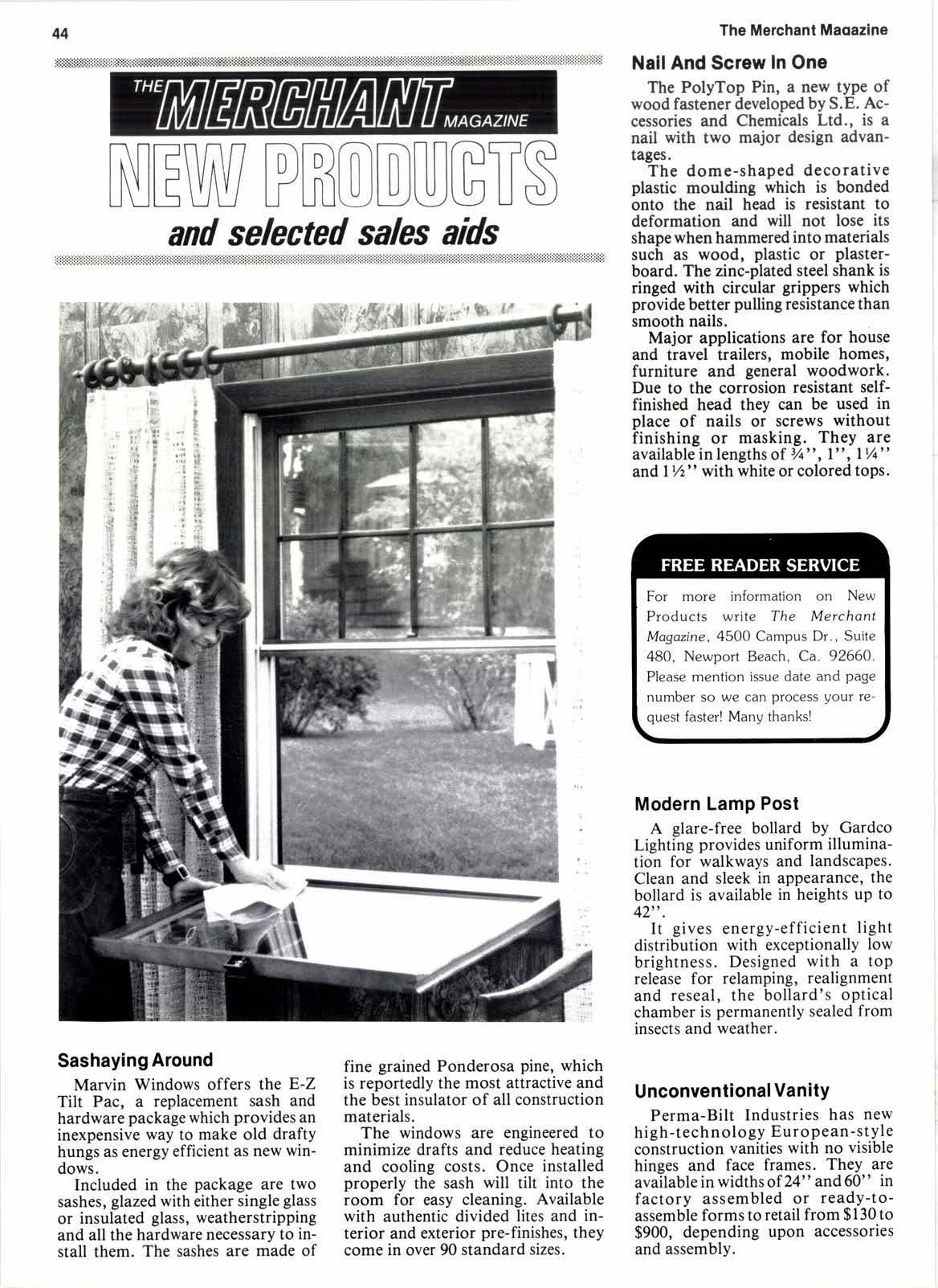
2 minute read
Changes in the hardwood business t
By Paul Penberthy President Penberthy Lumber Co. Los Angeles, Ca.
species are still growing there, but it is difficult to locate them.
Woods generally considered almost extinct are crabwood and African ebony, while others, even some well known woods such as zebrawood, satinwood, tulipwood and wenge, are seldom available in commercial quantities.
characteristics. Woods such as shedua, obeche, seraya, and meranti, plus a wide variety of soft hardwoods from the Amazon basin and Pacific Coast hardwoods such as alder, ash, oak, maple and aspen are becoming familiar names in many different industries. While the price is relatively high on some species, compared to earlier years, availability, better grades and sizes help offset the cost.
S THE world's population increases, man needs more living space and this is usually accomplished by a reduction in the forest areas. This forest land is harvested and used for farming, cattle grazing and ranching. Later come the towns and cities to take up more of the land.
In the 50 years we have been in business there have been many significant changes in the industry. In our country, walnut lumber has grown very scarce and extremely expensive. Many plantings and tree farms for walnut may keep it from disappearing, but the scarcity keeps the prices constantly rising until it will become too costly to use in conventional ways. The chestnut tree under which Longfellow's Smithy worked has been ravaged byblight and is now a thing of the past. Other lesser known species, such as butternut, magnolia, cypress and buckeye, are almost impossible to find.
The European woods, which have been important botanical species, are fast disappearing too, including holly, hornbean, lima, yew and boxwood. There are still some timbers harvested in Europe, mainly oak, beech and birch, but they are largely plantation grown and sparingly used.
In Africa many of the readily accessible areas have been cut out. Most of the familiar and well known
In South America we have seen Brazilian rosewood, the king of the rosewood family,completely disappear. Rosewoods from other areas are also getting increasingly more difficult and scarce, and will eventually go the way of the Brazilian species. Other Latin American species in jeopardy include Brazilwoodthe dyewood and violin bow wood is now in short supplyothers include greenheart, lignum vitae, primavera, bocote, and angilique.
Even in Asia where the enormous forests still abound, the handwriting is on the wall. The vast teak forests have been disappearing quite rapidly. Only Burma is exporting any quantity of this fine cabinet wood. The sandalwood of old has been ravaged in past years until it is almost extinct. Other Asian species disappearing are the padauk, narra and marblewood. Even the fine Japanese woods such as their oaks, maples, beech and birch are in such large demand at home that only limited amounts ever leave the country.
While this is a rather bleak outlook for the future, there are some bright spots. Many new woods are being discovered to take the place of the disappearing species. A number of them are available in commercial quantities and grades with excellent appearance and good workability
Another positive aspect to the industry is the improvement in processing and handling techniques which allow us to get.better utilization of the available timber and produce lumber which is more closely adapted to its particular use, with a minimum of waste. In the harvesting of lumber, the advent of the Caterpillar tractor and chainsaw have created substantial improvements in getting to sources which were heretofor inaccessible. It allowed us to move timber to ports with a reasonable amount of manpower. Although, interestingly enough, ebony is still brought out of the jungle on the heads of natives.










